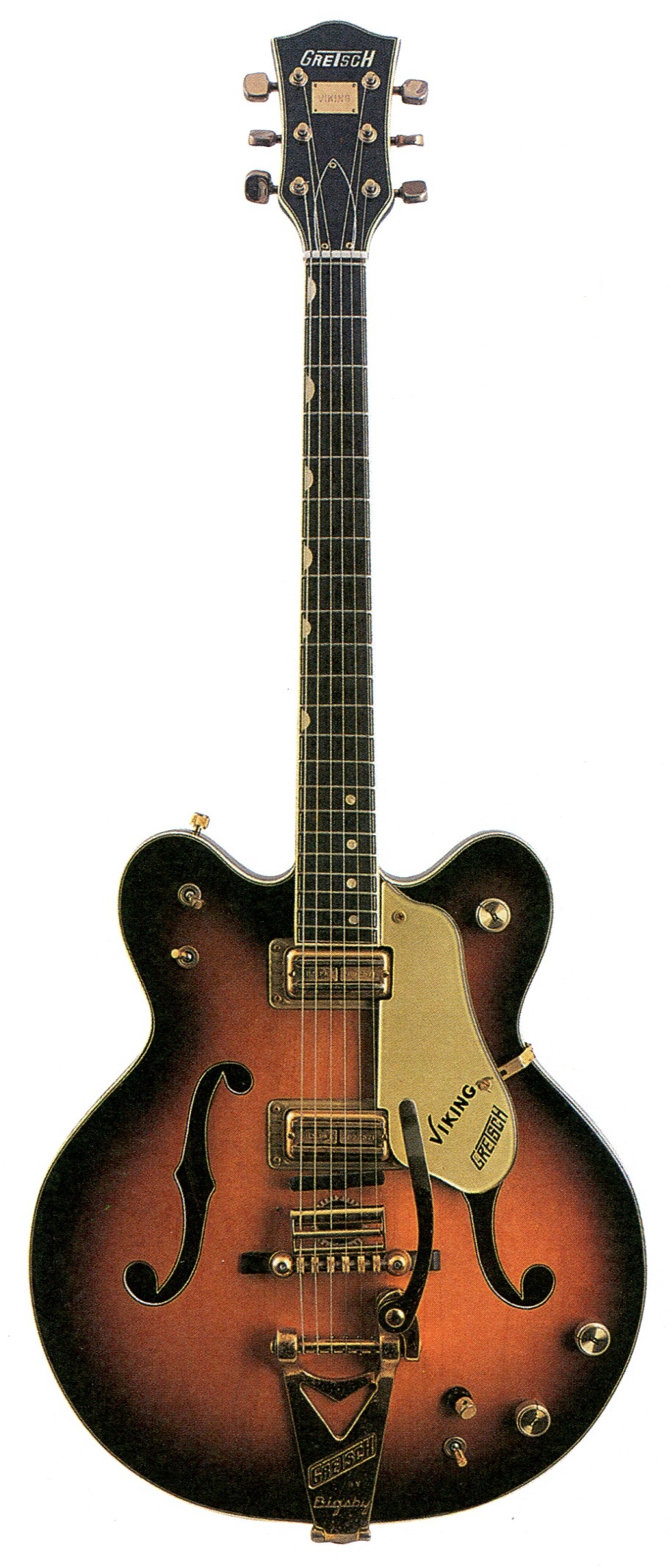Gretsch Viking

Gretsch changed it’s two-top 17-inch models, the White Falcon and the Country Gentleman, from single-cutaway to double-cutaway bodies in 1961, but curiously, the Country Club was left with a single cutaway. That left a hole in the line that Gretsch filled with the double-cut Viking model in 1964.
The Viking had the standard appointments of a high-end guitar, including Gretsch’s new Super’Tron humbucking pickups, a string mute, gold-plated hardware, and a nameplate on the peghead. The new “T-Zone” fingerboard featured slightly slanted frets in the area of the dot inlays, which were designed to provide better intonation.
Perhaps the most bizarre Gretsch innovation was the “tuning fork” bridge – a floating piece of metal that extended into the body, where it was shaped like an actual tuning fork. The idea was presumably to create a resonance, but it would only be effective in keys related to the pitch of the tuning fork. Players who wanted better functionality from the Viking removed the tuning fork and repositioned the roller bridge.
